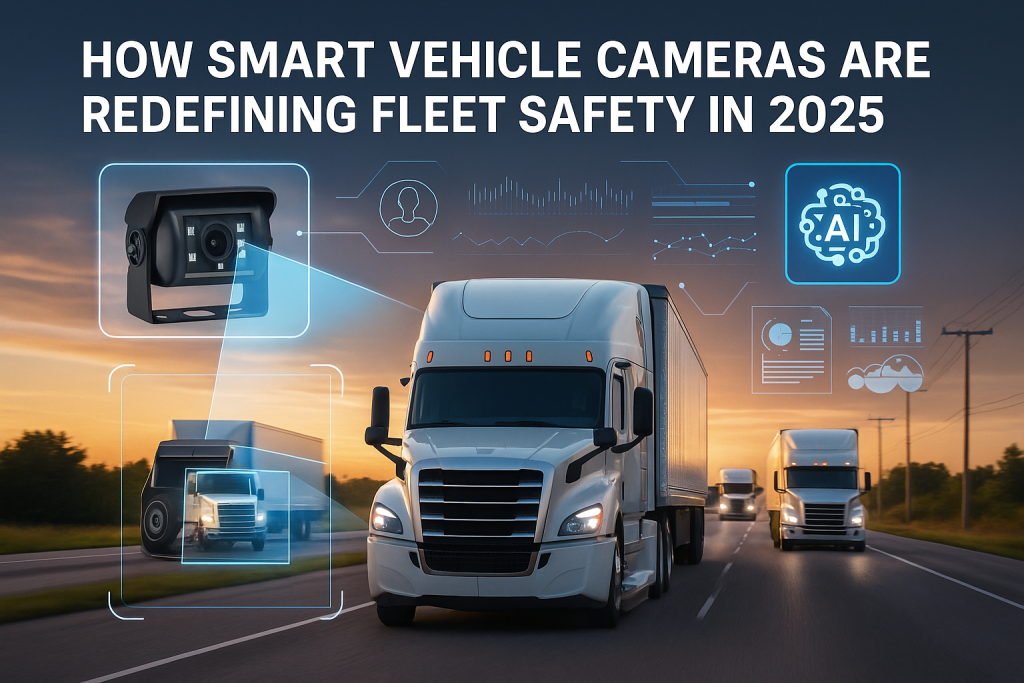In 2025, fleet management is no longer just about moving goods—it’s about smart, data-driven safety. Advanced vehicle cameras, powered by AI and connected monitoring systems, are transforming how logistics companies protect drivers, vehicles, and cargo. From accident prevention to driver behavior analysis, modern camera systems have become an essential part of every efficient fleet.
1. Smarter Eyes on the Road
Traditional backup cameras have evolved into multi-view, high-definition monitoring systems with AI-driven detection. These cameras don’t just record; they interpret. With lane departure warnings, pedestrian alerts, and real-time blind-spot monitoring, fleet operators can now respond before accidents happen.
🚚 Example: AHD and digital wireless systems can deliver 720p/1080p images with zero interference—crucial for trucks operating in busy ports or tight warehouse docks.
2. Built Tough for Every Environment
Fleet vehicles face extreme weather—from heavy rain to desert heat. That’s why the latest models feature IP69K waterproof ratings, ensuring cameras continue to perform during high-pressure washing or mud exposure.
Combined with wide dynamic range (WDR) technology, they deliver crystal-clear visibility even under harsh sunlight or at night.
🌧 These systems are ideal for trucks, forklifts, buses, and construction vehicles that operate in demanding outdoor conditions.
3. Wireless Connectivity & Remote Monitoring
Gone are the days of tangled cables. Modern fleet cameras now use digital wireless transmission, offering stable connections up to 300 m. Fleet managers can remotely access live video feeds, playback recordings, and receive alerts directly on their phones through dedicated mobile apps.
📱 The integration of Wi-Fi and 4G modules allows centralized monitoring for large fleets—saving time, reducing downtime, and improving accountability.
4. Data That Drives Improvement
Today’s smart systems store video in independent encrypted files, making it easier to review incidents or analyze driver performance. AI tools help identify patterns like harsh braking or distracted driving, allowing managers to train drivers proactively rather than reactively.
🧠 By combining data with video insights, fleets can reduce accident rates and improve insurance compliance.
5. The Future of Fleet Vision
The next generation of fleet cameras will integrate with ADAS (Advanced Driver Assistance Systems) and AI object recognition for full 360° situational awareness. Expect seamless integration with GPS, tire sensors, and vehicle telematics—offering complete real-time visibility of your operations.
Conclusion
From rugged IP69K waterproof designs to AI-powered analytics, vehicle camera technology is moving beyond simple monitoring—it’s becoming the nerve center of modern fleet safety.
If your fleet still relies on outdated systems, 2025 is the year to upgrade and embrace smart vision technology.


